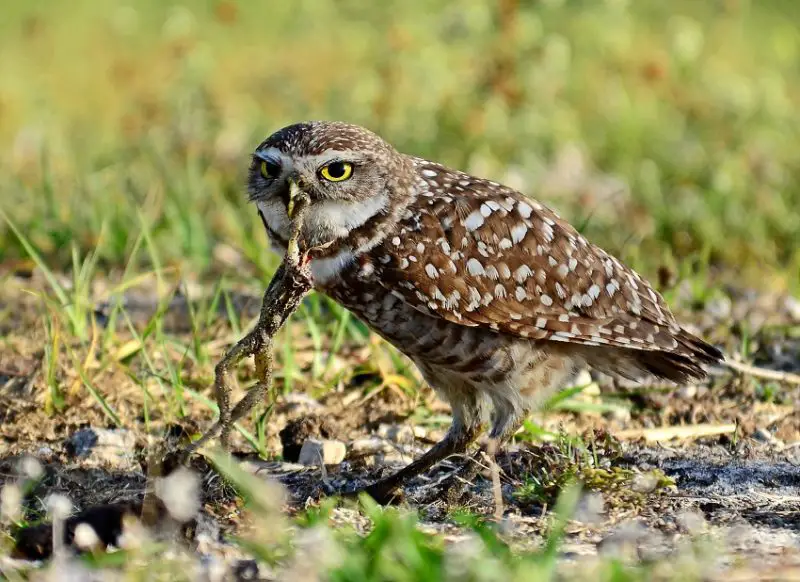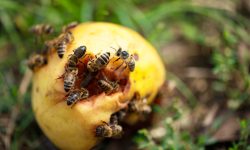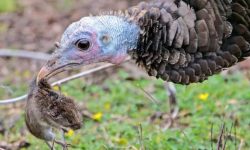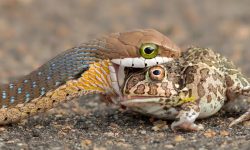Owls are among the most fascinating and mysterious predators in the animal kingdom. Known for their sharp talons, silent flight, and piercing eyes, they dominate the night skies as efficient hunters. But what exactly do owls eat?
The answer depends on their size, habitat, and species — from tiny screech owls to giant great horned owls. Their diet is impressively diverse, including small mammals, insects, fish, and even other birds. Understanding what owls eat not only helps us appreciate their role in ecosystems but also reveals just how adaptable and intelligent these nocturnal hunters truly are.
In this detailed guide, we’ll explore the 20 foods owls love the most, explain their hunting techniques, and answer common questions about their feeding habits.
Understanding Owl Diets

Owls Are Carnivores
Owls are strictly carnivorous. They depend entirely on animal prey for survival and never eat plant material. Their digestive system is specialized to extract nutrients from meat and expel indigestible parts like fur and bones in the form of pellets.
Hunting Style
Owls rely on stealth, patience, and precision. Their silent feathers let them swoop down on prey without being heard. Exceptional night vision and acute hearing allow them to detect movement from great distances. Once caught, the prey is swallowed whole or torn into pieces using a sharp beak.
Factors That Influence an Owl’s Diet
An owl’s diet depends on its species, habitat, and size. Smaller owls mostly eat insects and rodents, while larger species like great horned owls or eagle owls can take down rabbits, snakes, or even other birds.
20 Foods Owls Love the Most
1. Mice
Mice are the most common food for owls worldwide. These small mammals are abundant, easy to catch, and highly nutritious, making them a staple in the owl’s diet.
Owls such as barn owls and screech owls rely heavily on mice for their daily sustenance. A single owl can eat several mice each night, helping control rodent populations in both rural and urban areas.
2. Rats
Rats are a larger but equally important part of many owls’ diets. Great horned owls, barn owls, and barred owls are particularly skilled at hunting rats.
These prey provide dense protein and energy, ideal for maintaining body heat during cold nights. Owls that live near human settlements often benefit from abundant rat populations.
3. Voles
Voles — small, ground-dwelling rodents — are another favorite food. They’re slower than mice, making them an easy target for owls that hunt in grasslands or meadows.
Short-eared owls and snowy owls especially love voles. In some regions, vole population cycles directly affect owl breeding success because they’re such a dependable food source.
4. Rabbits
Larger owl species such as great horned owls and eagle owls often prey on rabbits. The size of these animals provides a large, satisfying meal, especially during winter when smaller prey becomes scarce.
Owls typically ambush rabbits from low perches or midair, striking quickly with powerful talons. They can carry smaller rabbits back to their nests to feed their young.
5. Shrews
Shrews are small, insect-eating mammals that owls often catch near forest edges or fields. Though tiny, they’re packed with protein and are easy to find.
Owls detect shrews by sound, pinpointing their rustling movements beneath leaves or snow. For smaller owl species, shrews provide perfect bite-sized nourishment.
6. Squirrels
Some larger owls occasionally eat squirrels, especially when other prey is limited. Tree-dwelling species like the barred owl or northern hawk owl may catch squirrels right in their habitat.
Squirrels are agile, so these hunts require precision and patience. Once caught, they offer a filling, nutrient-dense meal that can sustain an owl for a full day.
7. Bats
Owls are among the few predators capable of catching bats in mid-flight. Species such as the barn owl and great horned owl have been observed intercepting bats as they emerge from caves at dusk.
This hunting feat requires exceptional timing and agility. Bats provide a rich source of protein and fat, helping owls stay energized during breeding season.
8. Birds
Owls sometimes prey on other birds, especially smaller species like sparrows or pigeons. Great horned owls and snowy owls are known for targeting roosting birds at night.
They often ambush sleeping birds from above or below, using their stealth to catch them by surprise. This shows the owl’s incredible adaptability as a top predator.
9. Frogs and Toads
Amphibians like frogs and toads are common in the diets of owls living near wetlands or lakes. During rainy seasons, these creatures become easy prey due to their loud croaks and slow movements.
Owls swallow frogs whole, digesting the soft tissues and later regurgitating indigestible parts. Their flexible diet allows them to thrive even in aquatic environments.
10. Snakes
Owls such as the great horned owl or eagle owl sometimes eat snakes. Their strong talons and thick feathers protect them from bites during the struggle.
Snakes are an excellent source of protein and fat. Some owls even target venomous snakes, showcasing their confidence and dominance as apex night hunters.
11. Lizards
In desert and tropical regions, lizards are a regular part of an owl’s diet. Burrowing owls, for example, often catch small reptiles that emerge during twilight hours.
Their quick reflexes allow them to snatch lizards off the ground with ease. Lizards provide hydration as well as nutrition, essential for owls in arid climates.
12. Fish
Fish-eating owls, such as the Blakiston’s fish owl and African fishing owl, specialize in catching aquatic prey. They use keen eyesight to spot movement beneath the water’s surface.
With precise dives, they grasp fish using sharp talons designed for gripping slippery prey. Fish provide high-quality fats that help these owls maintain energy in cold, wet habitats.
13. Insects
Many smaller owl species rely on insects as a primary food source. Crickets, beetles, grasshoppers, and moths are all popular meals.
Insects are abundant, easy to catch, and provide essential protein. For young owls just learning to hunt, insects are a perfect starting prey.
14. Worms
Earthworms are commonly eaten by smaller owl species and juveniles. They’re easy to catch after rain when they surface on the ground.
Though not as nutrient-dense as mammals, worms provide hydration and trace minerals. Burrowing owls and screech owls often include them in their diets.
15. Crabs and Crustaceans
Owls that live near coasts or mangroves occasionally feed on crabs and small crustaceans. These meals are less common but provide valuable fats and minerals.
Such diets are more frequent in tropical or island species like the buffy fish owl. Their hunting skills adapt impressively to different ecosystems.
16. Small Birds of Prey
Great horned owls are notorious for eating smaller raptors, including kestrels and smaller owls. This behavior highlights their dominance among nocturnal predators.
They ambush their victims during rest periods or attack them mid-flight. Such prey provide large protein boosts but require exceptional strength to subdue.
17. Carrion
Although owls prefer live prey, they will sometimes eat carrion when food is scarce. Dead animals provide easy calories with minimal effort.
During harsh winters, scavenging helps owls conserve energy while still getting nutrition. This shows their adaptability and resilience.
18. Rodent Pups
Owls frequently target the young of rodents like rats, mice, or rabbits. These small, defenseless creatures are easy to catch and digest.
Rodent pups are especially valuable during nesting season when parent owls need to feed chicks quickly and efficiently.
19. Small Domestic Animals
In rare cases, large owls like the great horned owl may attack small pets such as kittens or small dogs if natural prey is limited.
While uncommon, these events illustrate the owl’s opportunistic nature. They never hunt pets deliberately but will seize easy opportunities if hunger demands it.
20. Other Owls
Some large owl species are cannibalistic under extreme conditions. For example, great horned owls have been known to prey on smaller owl species.
This behavior is rare but demonstrates how survival instincts can override social boundaries in the wild.
How Owls Eat
Owls swallow small prey whole, digesting soft tissues and compressing the indigestible parts — like bones and fur — into pellets. These pellets are regurgitated later, helping scientists identify their diet by analyzing the remains.
Their powerful digestive systems efficiently extract nutrients, allowing them to thrive even in harsh climates where food sources fluctuate.
Frequently Asked Questions (FAQs)
Do owls eat every night?
Yes, most owls hunt and eat nightly. Their metabolism requires regular feeding, though a single large meal can last one or two days.
Do all owls eat the same food?
No. Diets vary by species and habitat. Smaller owls eat insects and rodents, while larger ones target rabbits, birds, or reptiles.
Can owls eat fruit or plants?
No. Owls are strictly carnivorous. Their digestive systems cannot process plant matter.
Do owls drink water?
Yes, but rarely. Owls get most of their hydration from the prey they consume, which contains ample water.
How do owls hunt in complete darkness?
Owls have exceptional hearing and night vision. They detect prey movements through sound and light sensitivity far superior to humans.
Conclusion
Owls are nature’s perfect night hunters — silent, precise, and powerful. From tiny mice to snakes, frogs, and even other birds, these predators have evolved to master every corner of their ecosystem.
Their diverse diet not only keeps them alive but also balances populations of small animals, contributing to healthy ecosystems. Understanding what owls eat helps us appreciate their role in nature and the remarkable adaptations that make them one of the world’s most skilled hunters.
Whether it’s a barn owl swooping over a field or a snowy owl perched in the Arctic, their meals reveal one truth: owls are true masters of survival.






